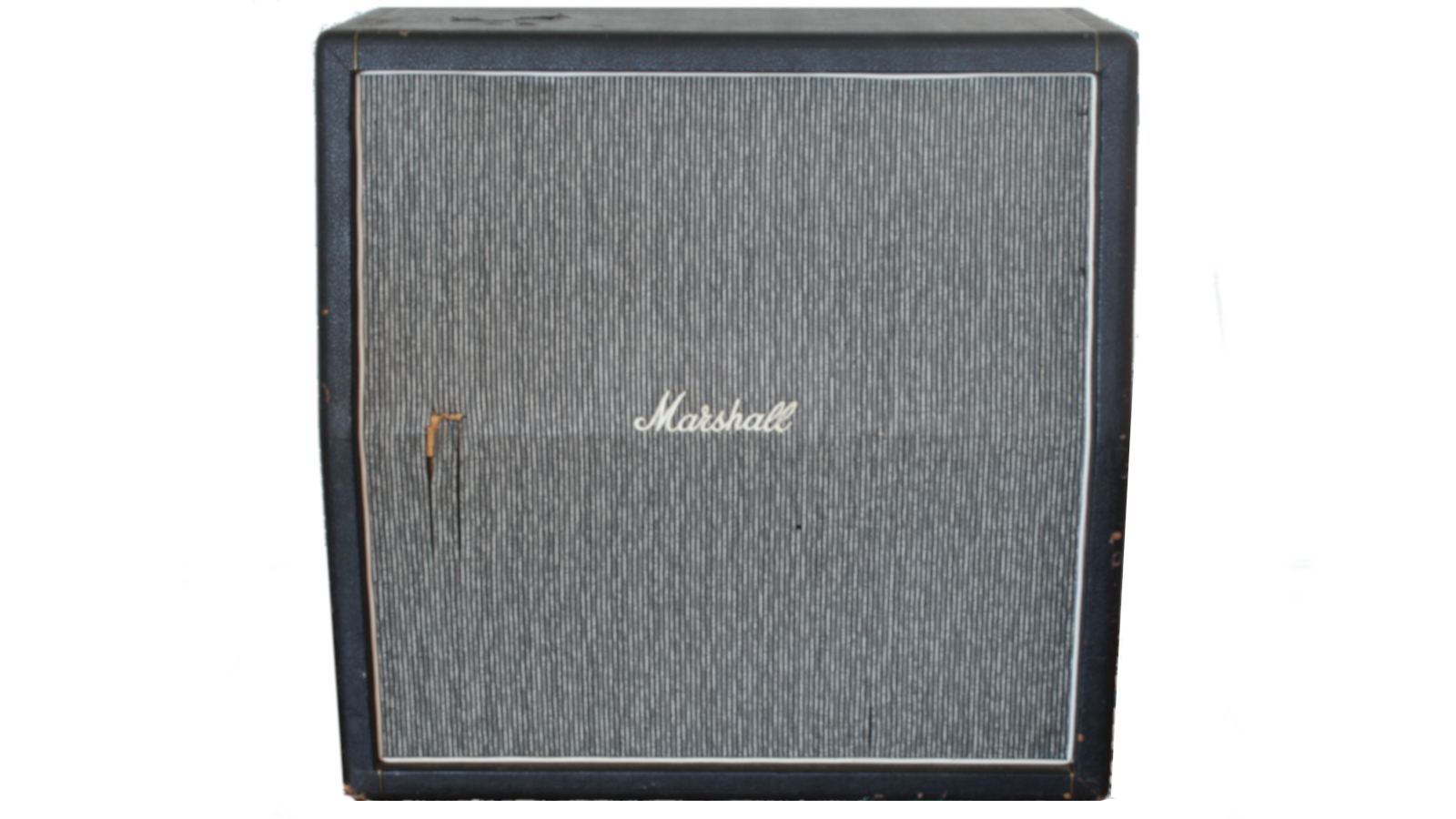Here’s Why the Mid-’60s Marshall 4x12 Speaker Cabinet Is an Essential Part of the Rock Equation
This formidable beast of tone helped the sound of the electric guitar evolve

The JTM45 and Plexi amplifiers Marshall built in the mid and late-mid 1960s, respectively, are often credited with helping the sound of the electric guitar evolve from classic rock and roll to full-throttle rock.
Less recognized, but always an essential part of the equation, is the 4x12 speaker cabinet upon which those Marshall heads stood. Any amp-o-phile will tell you the speaker cab is responsible for a significant portion of a rig’s overall sound, and the 4x12 cabs Jim Marshall, Ken Bran and Dudley Craven created for their amps might be just a little more deserving of acknowledgement than most.
Even with no amp head atop it, a classic 4x12 like the gorgeous 1966 example pictured here – a Model 1960A to be precise, with slanted upper speakers – just screams tone. That’s partly because we know a quartet of vintage Celestion Greenbacks most likely lurks within, but the look of the cabinet itself is utterly iconic and, thanks to its simplicity, extremely elegant.
The black levant covering, decorative gold string, and the pinstripe grille cloth framed by white piping have long merged into an iconic representation of what is deemed the “British look.” But this cab’s power is far more than skin deep.
According to Jim Marshall, no major acoustic science was applied to the design of the original 4x12 cabs. He and his team merely worked out dimensions that would comfortably fit four 12-inch Celestion speakers and slapped it together. Whether calculated or not, several aspects of the build impact the cab’s sound in significant ways.
The use of Baltic birch plywood yields excellent clarity and projection as well as structural rigidity, resulting in a more neutral and articulate cab than the solid-pine boxes in which Fender housed its tweed Bassman combos.

The fully enclosed back enhances the low-end and lower-midrange response, giving the sound more “thump” while simultaneously making the cab more directional and adding damping that makes the low-wattage speakers sound lively.
All the latest guitar news, interviews, lessons, reviews, deals and more, direct to your inbox!
Of course, those speakers play a big part in the sound too. Marshall needed four of them, initially, because they were capable of handling just 20 watts of power individually, and the full rage of the cranked head could be trusted only with a quartet.
Individually, the mid-’60s Celestion G12Ms are rather soft in the lows and sizzlingly crispy in the highs, but group four together in a closed-back box and the magic really happens. There’s nothing quite like standing in front of a good Marshall 4x12 while playing an amp that’s at least semi-cranked.

The punch and solidity produced by such a broad soundstage moving all that air is quite unlike the experience of playing through a 1x12 or 2x12 cab. A great Marshall head just seems to breathe and react differently and more dynamically when coupled to such a formidable beast.
Swap cabs, and the Brit and the Yank sound more like each other than you’d ever expect
If you’re still in any doubt about the 4x12 cab’s contribution to the sonic picture, consider this: Marshall based its first amps, the JTM45 series, on Fender’s late-’50s tweed 5F6A Bassman combo. The Plexis that followed differed by only a few components (although a few capacitors and tube changes can certainly make a noticeable difference in some respects).
The early Marshalls sound so very different from Fender’s 4x10 tweed combo, in large part due to the 4x12 cabs they were played through. Swap cabs, and the Brit and the Yank sound more like each other than you’d ever expect.
Meanwhile, for the past 50 years, plenty of guitarists and fans alike have felt they really weren’t at a rock show unless there was at least a Marshall 4x12 or two raging away onstage.
Dave Hunter is a writer and consulting editor for Guitar Player magazine. His prolific output as author includes Fender 75 Years, The Guitar Amp Handbook, The British Amp Invasion, Ultimate Star Guitars, Guitar Effects Pedals, The Guitar Pickup Handbook, The Fender Telecaster and several other titles. Hunter is a former editor of The Guitar Magazine (UK), and a contributor to Vintage Guitar, Premier Guitar, The Connoisseur and other publications. A contributing essayist to the United States Library of Congress National Recording Preservation Board’s Permanent Archive, he lives in Kittery, ME, with his wife and their two children and fronts the bands A Different Engine and The Stereo Field.

